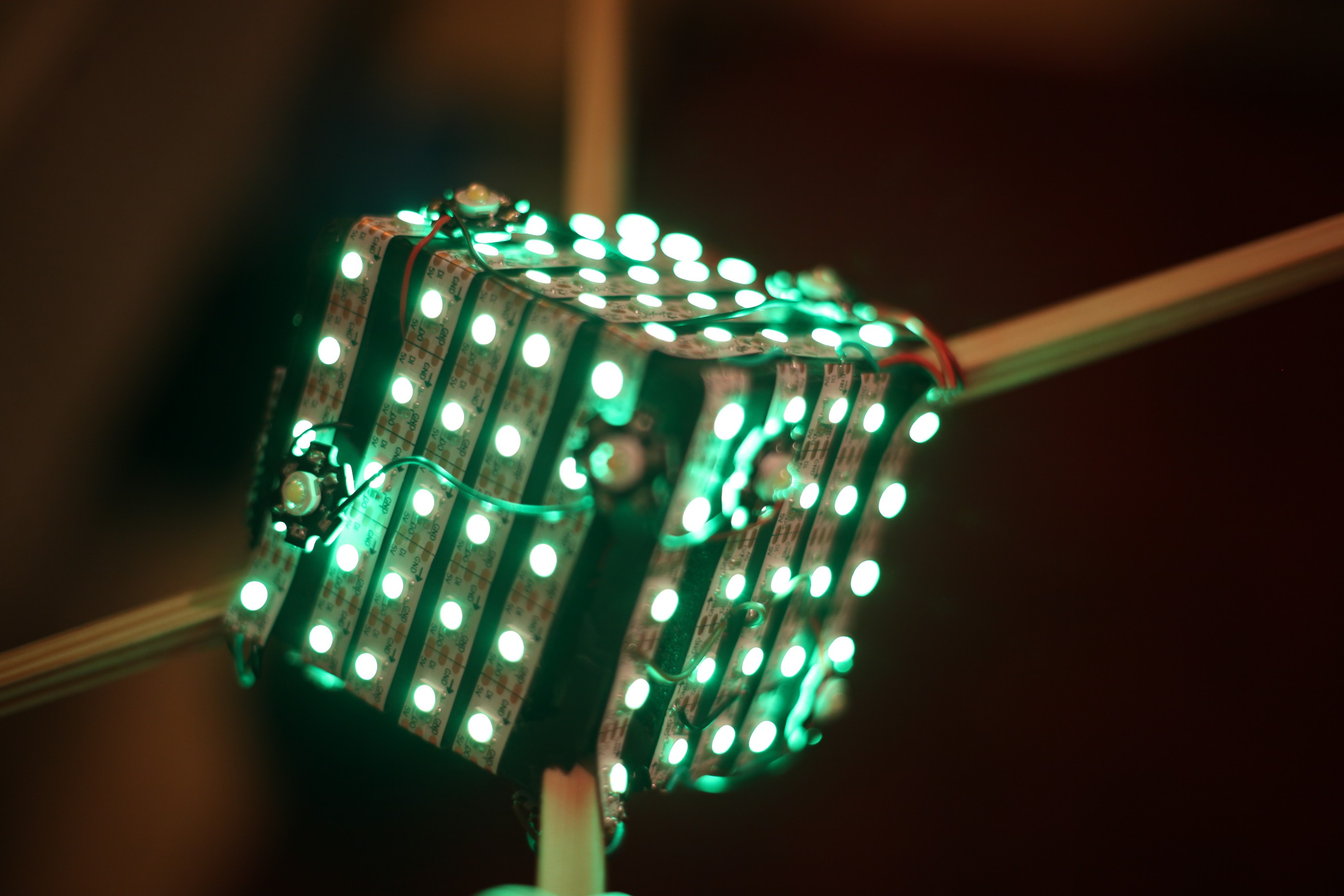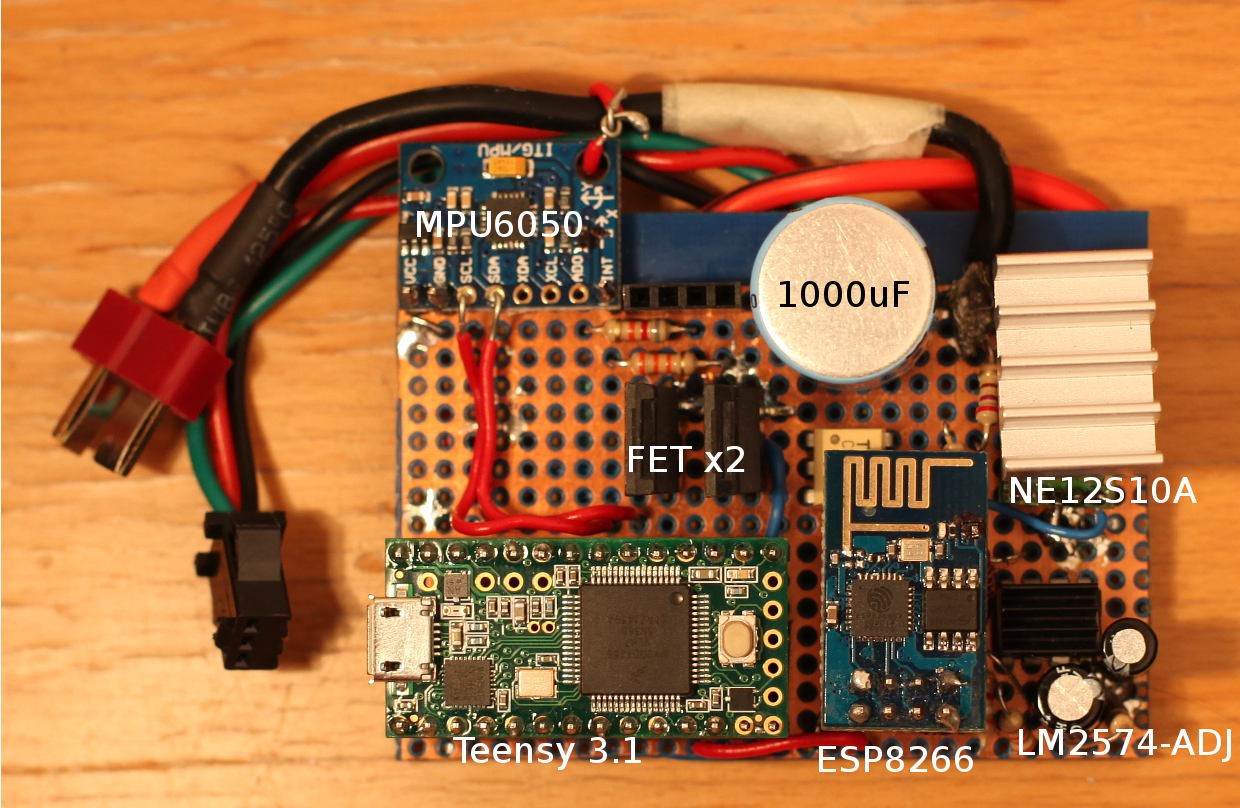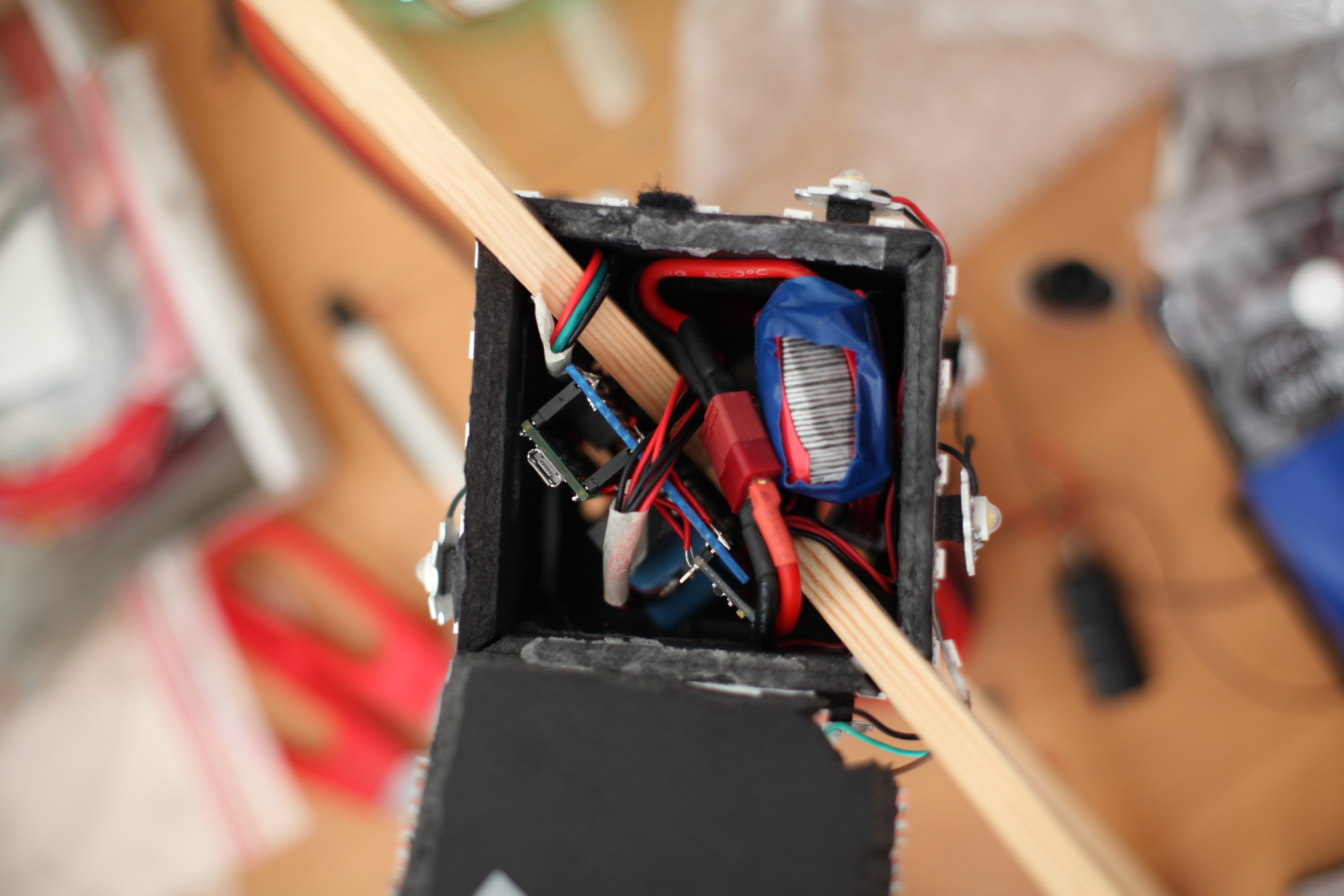So this is what the internal "bulb" looks like:
It has 148 Neopixels and 12 3W power LEDS, which consumes about 40W each when set on full power! Luckily it will newer be on on full for more than a second or two in a row so I only have to manage those effects as peaks.
The power LEDs are driven by two FET transistors (at ground) directly on the battery 12V voltage, configured in series of three with two in parallel on each FET and then controlled by a PWM signal from the Teensy.
The 148 Neopixels proved a lot more tricky, first they will have a calculated peak current of 9A at 5V and they do not like the 12V from the battery. So I had to find a regulator which could buck the voltage down and sustain that current! Well I found one impressive regulator NE12S10A which delivers up to 10A of current at 0.59 -5.1V @ 94% efficiency, perfect! Or... Turns out it is very inefficient at small loads, it draws 80 mA at IDLE and gets very hot also. And I want the cube to turn off the lights when standing still, and it should be able to do that for a long time.
Solution? LM2574, an easy to build regulator for currents up to 0.5 A. I "programmed" (resistor bridge) it to deliver the 3.3V needed for the Teensy, ESP and MPU instead of using a linear regulator from the 5V source. And then connected the enable pin from the NE12S10A to the Teensy so that I dynamically may turn it on and of when needed. It powers up to 90% of full power in 3ms which is more than enough for me.
All solved? Nope, the NeoPixels didn't turn on... Well missed the part about signal strength for the first Din. Oh well, it needs 70% of Vin which equals to 3.5 V, close but not enough. the recommended solution out there on forums seems to be logic level shifters, but I didn't have one on hand and wanted it to work. It struck me that I could lower the Vin as well, 3.3V is 70% of 4.7 V, so I tried that and it worked like a charm! Actually I changed the voltage dynamically with a potentiometer and could see that there was no real difference in the light, so I settled on 4.5 V as Vin, same power and stable signal!
Summary:
3.3V max 0.5A, micros
4.5V max 10A Neopixels, only on when needed
This is what it looks like mounted inside the bulb, pretty stuffed.



Discussions
Become a Hackaday.io Member
Create an account to leave a comment. Already have an account? Log In.